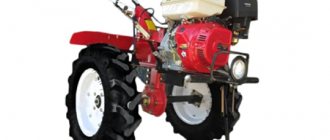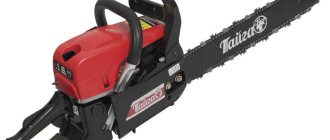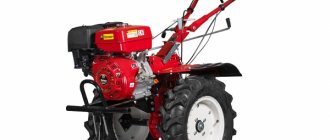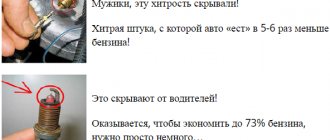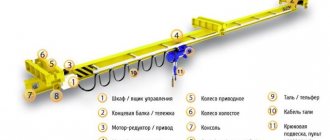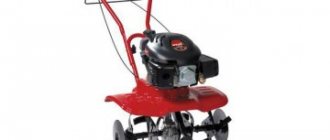| This article lacks links to sources of information. Information must be verifiable, otherwise it may be questioned and deleted. You may edit this article to include links to authoritative sources. This mark was set on December 12, 2014 . |
UAZ Hunter
UAZ Hunter on Wikimedia Commons
Total information
| Manufacturer | UAZ |
| Years of production | 2003–present |
| Assembly | UAZ (Ulyanovsk, Russia) |
| Class | SUV |
| Other designations | UAZ-315195 |
Design
| Body type(s) | 5-door station wagon (7-seater) |
| Layout | front-engine, all-wheel drive (permanent rear, with rigidly connected front) |
| Wheel formula | 4 × 4 |
Engines
UMZ-4213
| Brand: | UMZ-4213 |
| Type: | Gasoline injection |
| Volume: | 2890 cm3 |
| Maximum power: | 104 l. s., at 4000 rpm |
| Maximum torque: | 201 Nm, at 3000 rpm |
| Configuration: | in-line, 4-cylinder. |
| Cylinders: | 4 |
| Max. speed: | 125 km/h |
| Fuel consumption combined cycle: | 14.5 l/100 km |
| Fuel consumption on the highway: | 10.4 l/100 km |
| Environmental standards: | Euro 2 |
| Cylinder diameter: | 100 mm |
| Piston stroke: | 92 mm |
| Compression ratio: | 8,2 |
ZMZ-409.10
| Manufacturer: | Zavolzhsky Motor Plant |
| Brand: | ZMZ-409.10 |
| Type: | Gasoline injection |
| Volume: | 2693 cm3 |
| Maximum power: | 94 kW (128 hp), at 4400 rpm |
| Maximum torque: | 208 Nm, at 3000 rpm |
| Configuration: | in-line, 4-cylinder. |
| Cylinders: | 4 |
| Valves: | 16 |
| Max. speed: | 130 km/h |
| Fuel consumption combined cycle: | 13.5 l/100 km |
| Environmental standards: | Euro-2, Euro-3 |
| Cylinder diameter: | 95.5 mm |
| Piston stroke: | 94 mm |
| Compression ratio: | 9,0 |
| Recommended fuel: | gasoline with an octane rating of at least 92 |
ZMZ-5143.10
| Manufacturer: | Zavolzhsky Motor Plant |
| Brand: | ZMZ-5143.10 |
| Type: | Diesel |
| Volume: | 2235 cm3 |
| Maximum power: | 98 l. s., at 4000 rpm |
| Maximum torque: | 216 Nm, at 2100 rpm |
| Configuration: | in-line, 4-cylinder. |
| Cylinders: | 4 |
| Max. speed: | 120 km/h |
| Fuel consumption combined cycle: | 10.1 l/100 km |
| Environmental standards: | Euro-2, Euro-3 |
| Cylinder diameter: | 87 mm |
| Piston stroke: | 94 mm |
| Compression ratio: | 19,5 |
| Recommended fuel: | Diesel |
Transmission
manual, 5-speed (4-speed)
Characteristics
Mass-dimensional
| Length | 4170 mm |
| Width | 2010 mm (1785 mm - without mirrors) |
| Height | 2025 mm |
| Clearance | 210 mm |
| Wheelbase | 2380 mm |
| Rear track | 1445 mm |
| Front track | 1445 mm |
| Weight | 1665 kg, 1770 kg (with ZMZ-409 engine), 1815 kg (with ZMZ-514 engine) |
| Full mass | 2520 kg |
On the market
| Predecessor Predecessor UAZ-31519 |
| Similar models | Mercedes-Benz G-Class |
| Segment | J-segment |
Other
| Load capacity | 750 kg |
| Volume of the tank | 2×39 l |
UAZ Hunter (UAZ-315195)
— an all-terrain vehicle (SUV) for use on roads of all categories, as well as over rough terrain. The car, which is a further development of the UAZ-469 and UAZ-3151 models, has been produced by the Ulyanovsk Automobile Plant since 2003.
Story
The Ulyanovsk Automobile Plant began serial production of the UAZ Hunter on November 19, 2003. Before this, in 1985-2007, the UAZ-3151, UAZ-31512, UAZ-31514, UAZ-31519, UAZ-3153 models were produced, and in 1972-1986 - UAZ-469 and UAZ-469B.
In the spring of 2014, the plant management announced the removal of the car from production, calling it obsolete. However, from February 2015, it was decided to resume production of the updated Hunter, which complies with Euro-5 environmental standards and safety requirements[1].
UAZ fuel consumption
UAZ fuel consumption.
1. UAZ - Ulyanovsk Automobile Plant. Founded in 1941. Manufacturer of all-wheel drive passenger cars, light trucks and minibuses of the UAZ brand.
2. Selecting a UAZ using technical and operational indicators in the table below is the task of this article.
3. The characteristics of UAZ vehicles are presented by modern models, the number and arrangement of engine cylinders, their power and displacement, the type of gearbox and the basic fuel consumption rate.
4. UAZ fuel consumption is the main technical indicator when choosing and operating a vehicle.
The basic fuel consumption rate for UAZ passenger cars produced since 2008 is taken from the methodological recommendations of the Russian Ministry of Transport “Consumption standards for fuels and lubricants in road transport.”
According to this document, the basic norm is the norm in liters per 100 km of run of a vehicle in running order, which corresponds to the driving mode of a passenger car without passengers in a suburban area in the summer.
The suburban zone, according to Article 49 of the Town Planning Code of the Russian Federation, is defined as lands outside the city limits, constituting a single social, natural and economic territory with the city.
Summer time for Moscow and the Moscow region is from April to October, for the Kemerovo region - from May to October, for the Kaliningrad region from March 15 to November 14, for the Magadan region from May 1 to October 14, and so on for the constituent entities of the Russian Federation (given in Appendix 2 of the above methodological recommendations of the Ministry of Transport of the Russian Federation).
In other conditions (not in a suburban area in summer), this will already be the operating fuel consumption rate.
It can be lower than the basic one by up to 15% if the car is driving on public roads of categories I, II and III outside the suburban area on flat, slightly hilly terrain.
The fuel consumption rate of a passenger car will be higher than the basic one when driving in cities and other populated areas, when operating the car in winter conditions, when using climate control or air conditioning, when operating cars with a service life of more than five years, etc.
This article describes surcharges to fuel consumption standards for motor vehicles in Russia.
5 . UAZ fuel consumption is shown in the table in the form of a basic consumption rate for 25 passenger car models.
6. UAZ fuel consumption in the form of an operating norm UAZ vehicles are operated for commercial purposes. Standards are approved for the purposes of accounting for fuel costs in road transport organizations in accordance with the Instructions approved by Order of the Ministry of Transport of the Russian Federation dated June 24, 2003 N 153. According to paragraph 40 of this Instruction, fuel costs for motor vehicles should be included in material costs in expenses for ordinary types of activities within these standards.
Read more: Wallpaper or suspended ceiling reviews first
Individual users can be guided by the basic fuel consumption rate in the following cases:
a) when purchasing a UAZ model car;
b) when planning fuel costs during its operation, taking into account increasing or decreasing surcharges.
Individual users also have the right to compensation for the use of personal UAZ passenger cars for business trips. Article 188 of the Labor Code states: when an employee uses personal property with the consent or knowledge of the employer and in his interests, the employee is paid compensation for the use, wear and tear (depreciation) of tools, personal vehicles, equipment and other technical means and materials belonging to the employee, as well as reimbursement of expenses related to their use. The amount of reimbursement of expenses is determined by agreement of the parties to the employment contract, expressed in writing.
Article 188 in relation to personal transport is understood as follows:
a) compensation is for wear and tear (depreciation) of the car and, most likely, for its repairs. The amount of compensation was approved by Decree of the Government of the Russian Federation of February 8, 2002 N 92;
b) reimbursement of expenses associated with the use of a car - these are fuel costs (just according to operating standards based on basic fuel consumption standards). Although in practice, tax authorities try to take only compensation as offset. At the same time, the Labor Code has a higher status than instructions from the Ministry of Finance.
Legend:
4L - number and arrangement of cylinders (L - in-line); 2.693 — engine displacement, l; 128 — engine power, hp; 5M - number of gears (M - mechanical); D – diesel fuel.
UAZ passenger cars produced since 2008.
| N p/p | Model, brand, modification of the car | Number and arrangement of cylinders | Engine power, hp | Working volume, l | checkpoint | Basic fuel consumption rate, l/100 km |
| UAZ | ||||||
| 1 | 23632 (ZMZ-409040) | 4L | 128 | 2,693 | 5M | 14,3 |
| 2 | 23632 Pickup Comfort (ZMZ-409.10) | 4L | 128 | 2,693 | 5M | 13,9 |
| 3 | 3151 (UMZ-42130K) | 4L | 104 | 2,890 | 4M | 15,2 |
| 4 | 315143 (Andoria 4CT90) | 4L | 86 | 2,417 | 4M | 11.6D |
| 5 | 315148 (ZMZ-5143) | 4L | 91 | 2,240 | 5M | 11.0D |
| 6 | 315148-053 Hunter (ZMZ-51430L) | 4L | 92,6 | 2,240 | 5M | 11.6D |
| 7 | 315159 (ZMZ-40900H) | 4L | 128 | 2,693 | 5M | 13,5 |
| 8 | 31519 (UMZ-421800) | 4L | 86 | 2,890 | 4M | 16,4 |
| 9 | 31519-10 (ZMZ-41040B) | 4L | 85 | 2,890 | 4M | 15,7 |
| 10 | 315192 (UMZ-4213) | 4L | 104 | 2,890 | 4M | 14,0 |
| 11 | 315194 (UMZ-4213) | 4L | 104 | 2,890 | 4M | 14,0 |
| 12 | 315195 (ZMZ-40904) | 4L | 128 | 2,693 | 5M | 13,4 |
| 13 | 315195 Hunter (ZMZ-409040) | 4L | 128 | 2,693 | 5M | 13,9 |
| 14 | 315196 (ZMZ-4091) | 4L | 112 | 2,693 | 5M | 13,4 |
| 15 | 31601 (Andoria 4C90) | 4L | 70 | 2,417 | 5M | 10.6D |
| 16 | 31602 (ZMZ-40900) | 4L | 133 | 2,693 | 5M | 14.1 |
| 17 | 31605 (UMZ-4213) | 4L | 102 | 2,890 | 5M | 15,3 |
| 18 | 31622 (ZMZ-40900) | 4L | 128 | 2,693 | 5M | 13,6 |
| 19 | 31631 (Iveco F1A) | 4L | 116 | 2,287 | 5M | 9.9D |
| 20 | 3163-10 "Patriot" (Andoria 4CT90) | 4L | 86 | 2,417 | 5M | 10.3D |
| 21 | 3163-10 “Patriot” (armor; ZMZ-409.10) | 4L | 128 | 2,693 | 5M | 14,5 |
| 22 | 3163-120 "Patriot" (ZMZ-40904) | 4L | 128 | 2,693 | 5M | 13,8 |
| 23 | 31631-225 (Iveco F1A) | 4L | 116 | 2,287 | 5M | 10.1D |
| 24 | 3164-011 Patriot (ZMZ-4091) | 4L | 112 | 2,693 | 5M | 14,1 |
| 25 | 31642 Patriot Sport (ZMZ-409040) | 4L | 128 | 2,693 | 5M | 13,9 |
Read more: Man TGA fuel system
7. The UAZ engine power (in the table) is the basis for calculating the transport tax payment. Transport tax, example (the standard is established by the constituent entity of the Russian Federation):
Passenger cars with engine power (per horsepower):
up to 100 hp (up to 73.55 kW) inclusive – 10 rubles;
over 100 hp up to 150 hp (over 73.55 kW to 110.33 kW) inclusive – 20 rubles;
over 150 hp up to 200 hp (over 110.33 kW to 147.1 kW) inclusive – 35 rubles;
over 200 hp up to 250 hp (over 147.1 kW to 183.9 kW) inclusive - 60 rubles;
over 250 hp (over 183.9 kW) – 120 rubles.
8. UAZ fuel consumption with the lowest values of the basic norm by type of fuel used is presented in this table by the following models:
- for diesel fuel: UAZ - 31631 (Iveco F1A) with a basic consumption rate of 9.9 liters per 100 km; - for gasoline: UAZ - 315195 (ZMZ-40904) and UAZ - 315196 (ZMZ-4091) with a base rate of 13.4 liters per 100 km. ZMZ - Zavolzhsky Motor Plant.
9. UAZ fuel consumption is calculated using the formula
Q = 0.01 x Hs x S x (1 + 0.01 x D),
where Q is the calculated fuel consumption, l;
Hs - basic fuel consumption rate for vehicle mileage, l/100 km;
S—vehicle mileage, km;
D — correction factor (total relative increase or decrease) to the norm, %.
The basic norm is in the table. The values of correction factors are given in the methodological recommendations of the Ministry of Transport of Russia “Consumption standards for fuels and lubricants in road transport”.
Here is an example of calculating the fuel consumption of a passenger car (applicable also for UAZ vehicles).
UAZ fuel consumption is always acceptable. The developers are seriously thinking about reducing fuel consumption for different UAZ brands.
UAZ is a car with all-wheel drive, has high cross-country ability and moderate fuel consumption. The front axle of the UAZ is turned off by default and turns on when necessary. Engaging the front axle will significantly increase the fuel consumption of the UAZ.
UAZ fuel consumption depends on its modification (brand), driving style and time of year. The table below shows average fuel consumption for different UAZ brands.
Specifications
Tuning UAZ Hunter with a winch, participant of the expedition to Mongolia
- Transfer case 2-speed: I - 1; II - 1.94
- Front brakes: ventilated disc, two cylinders, with floating caliper
- Rear brakes are drum type, with one cylinder, with automatic adjustment of the gap between the linings and the drum
- The front suspension is dependent, spring with anti-roll bar, double-acting telescopic hydropneumatic shock absorbers, with two trailing arms and a transverse link
- The rear suspension is dependent, on two longitudinal semi-elliptic leaf springs and double-acting telescopic hydropneumatic shock absorbers
- Tires 225/75R16, 235/70R16, 245/70R16
Technical content of an SUV
The body of the Hunter car was supplemented with numerous plastic overlays, modified bumpers and other external modifications. The doors of the UAZ 315195 do not have roll-up windows, and the interior is ventilated thanks to sliding windows. As for the engines, they interact with manual gearboxes.
A modern UAZ is equipped with a transfer case, making all-wheel drive available, and there is also a reduction gear. Rear-wheel drive is useful for asphalt roads, and off-road driving is possible with front-wheel drive. In the latter case, the Hunter becomes a powerful SUV with half the torque distributed across all axles.
The UAZ gearbox has the ability to lock the center differential, while the cross-axle locks are activated when using hubs. The impressive clearance of the 315195 Hunter model reaches 21 cm. This attracts car enthusiasts who prefer massive structures. According to the passport, the fuel consumption of a car with a gasoline engine is 13.2 liters, and with a diesel engine – 10.1 liters.
It is worth noting that the highest speed of the 315195 Hunter car is 160 km/h. Hunter has dependent front and rear suspensions.
Options and modifications
- Hunter Classic is a version equipped with metal bumpers and a tailgate, and is also distinguished by the absence of plastic linings on the body.
- In 2020, a limited edition of the UAZ Hunter SUV was released, dedicated to the 70th anniversary of Victory in the Great Patriotic War. On board these vehicles there is airbrushing similar to the design on the fuselage of Titarenko’s plane, the main character of the cult Soviet feature film “Only “old men” go into battle”[2].
- UAZ Hunter Devolro is a tuning American version, most of the units used are from third-party manufacturers[3].
Table of fuel costs for UAZ brands.
The table describes the average costs for different brands of UAZ .
Fuel consumption is presented in three types - city, highway and mixed (average) fuel consumption. All data on fuel costs are from the UAZ vehicle manufacturer. For almost all UAZ brands, fuel consumption does not exceed 20 liters per 100 km. Brand UAZ
| UAZ fuel consumption, liter/100 km | |
| UAZ-3151 Hunter (engine=2200) | Mixed flow = 13.2 |
| UAZ Hunter (2012 release, petrol, 2.7 liter engine) |
Actual expenses:
Read more: How to remove the steering wheel on a Solaris video
18.0 (Winter in the city)
16.0 (Summer in the city)
UAZ has acceptable fuel consumption!
The fuel consumption of the UAZ has acceptable figures, thanks to the introduction of an injector. UAZ cars are acceptable to most people and are inexpensive cars, with the exception of new UAZ brands.
The new UAZ engine demonstrates extreme efficiency, thanks to which the vehicle has low fuel consumption and a reduced level of harmful emissions into the atmosphere.
The main reasons for the increased fuel consumption of UAZ.
1. UAZ begins to consume more than 20 liters of fuel - if both axles are turned on!
2. UAZ fuel consumption increases when driving in higher gear.
3. UAZ fuel consumption is higher if the tire pressure is below the standard - this applies to all cars.
4. The fuel system is faulty - the UAZ consumes more fuel - the carburetor settings are messed up, carburetor problems, incorrect injector firmware.
5. The reason for the increased fuel consumption on the UAZ is old, “tired” spark plugs, a clogged air filter, and late ignition.
